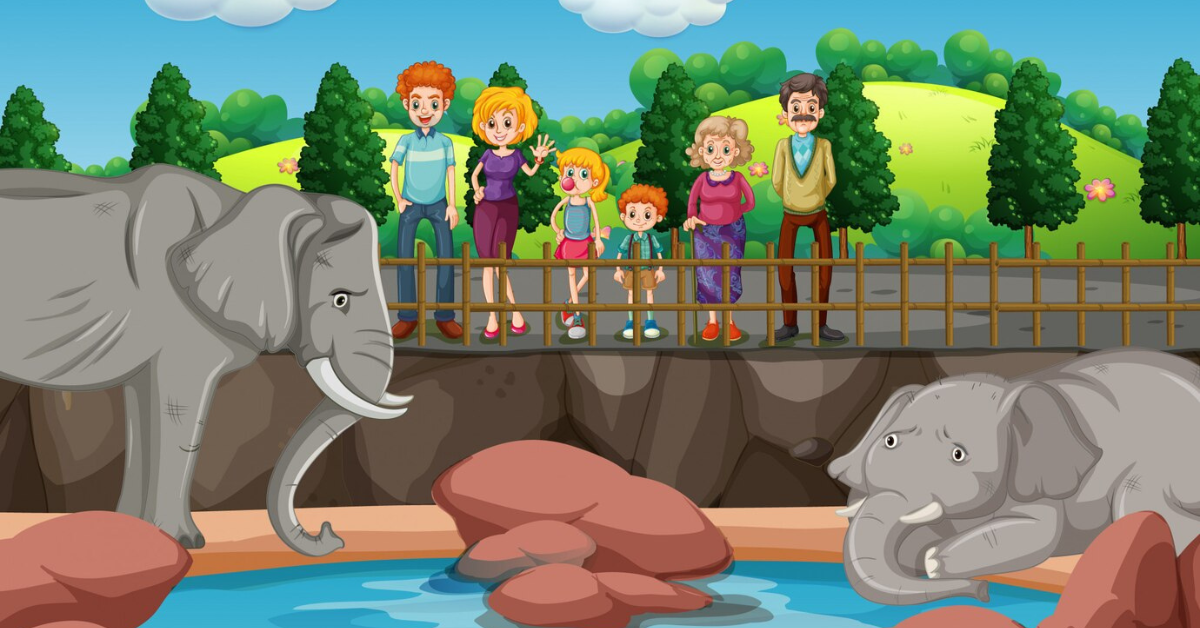In the evolving landscape of modern creativity, few genres are as whimsical, thought-provoking, and emotionally engaging as zoo art. Referred to by some as the art of zoo, this form of visual expression captures the relationship between humans and animals in ways that stir curiosity and admiration.
With the rise of digital media and cross-cultural influences, zoo art has expanded far beyond traditional depictions. It now serves as a vibrant bridge between wildlife appreciation and creative storytelling.
Table of Contents
- Understanding the Art of Zoo Concept
- The Historical Roots of Zoo Art
- Modern Interpretations and Expressions
- Why Zoo Art Captivates Viewers
- The Role of Animals in Artistic Inspiration
- Table: Key Themes in Zoo-Inspired Artworks
- Popular Forms of Zoo Art in Contemporary Culture
- Artists Known for Zoo-Themed Creations
- Cultural and Educational Impact of Zoo Ar’t
- Digital Platforms and Social Sharing
- Zoo Art as a Tool for Conservation Awareness
- Public Perception and Common Misunderstandings
- Tips for Creating or Appreciating Zoo Ar’t
- Conclusion
- FAQs
Understanding the Art of Zoo Concept
At its core, the art of zoo refers to artworks that are inspired by zo’o animals or wildlife scenes. It blends fine art with environmental storytelling and often reflects emotional connections between humans and animals.
This genre includes illustrations, paintings, sculptures, digital renderings, and even mixed media pieces that explore zoo life through artistic lenses.
The Historical Roots of Zoo Art
Zoo-inspired ar’t is not a new concept. Ancient civilizations often portrayed animals in cave paintings, temples, and royal artwork. From the lions of Mesopotamia to Egyptian hieroglyphs of sacred animals, the fascination with wildlife has always existed in human history.
With the establishment of modern zoological parks in the 18th and 19th centuries, artists found new opportunities to observe and depict animals in detailed, realistic ways. This gave birth to classical zoo ar’t as we know it today.
Modern Interpretations and Expressions
Contemporary artists have taken the art of zoo beyond the realm of realism. Now, it’s common to see wildlife blended with fantasy, surrealism, and abstract storytelling. These works are showcased in:
- Museum exhibitions
- Online galleries
- Zoo gift shops
- Conservation campaigns
- Digital NFT platforms
Artists use vibrant colors, stylized animals, and dreamlike compositions to give zoo ar’t a refreshing and emotional edge.
Why Zoo Art Captivates Viewers
Zoo ar’t stirs both emotion and intellect. Viewers are drawn to it for several reasons:
- Emotional resonance: The innocence and majesty of animals evoke compassion
- Visual intrigue: Unique artistic styles make animals appear mystical or human-like
- Symbolic meaning: Animals are often metaphors for strength, freedom, or fragility
- Educational value: Helps viewers learn about endangered species or ecosystems
This multi-layered appeal explains why zoo ar’t remains a popular genre across ages and cultures.
The Role of Animals in Artistic Inspiration
Animals have long served as muses for artists. Whether it’s the gaze of a tiger, the elegance of a giraffe, or the playfulness of otters, wildlife offers rich emotional material to explore.
Through zoo ar’t, these traits are emphasized to reflect deeper messages about:
- Human connection to nature
- Animal rights and ethical treatment
- The mystery of the wild world
Table: Key Themes in Zoo-Inspired Artworks
| Theme | Description |
| Conservation Awareness | Art highlighting endangered species and habitat loss |
| Human-Animal Bond | Portrayals of emotional connections with animals |
| Freedom vs. Captivity | Exploring the zoo experience from different angles |
| Spiritual Symbolism | Animals representing virtues or mystic beliefs |
| Humor and Whimsy | Playful, imaginative representations of wildlife |
Popular Forms of Zoo Art in Contemporary Culture
Zoo-inspired art comes in many formats, each offering a unique way to connect with nature:
- Sketches and illustrations: Often used in educational materials or journals
- Oil and acrylic paintings: Vibrant gallery-worthy expressions
- Sculptures and installations: Found in parks, zoos, or city spaces
- Digital artwork: Popular on social media and NFT markets
- Street art: Murals bringing zoo life to urban environments
This diversity makes the art of zoo accessible and ever-evolving.
Artists Known for Zoo-Themed Creations
Several contemporary artists have earned recognition for their wildlife-themed works. These artists use various styles and mediums to convey emotion and environmental messages:
- Charley Harper: Known for minimalist illustrations of wildlife
- Lisa Ericson: Famous for surreal animal combinations and hybrids
- Robert Bateman: A master of realism in wildlife painting
- Banksy: Occasionally features animal-related themes in street art
These creators help shape public perception of zoo ar’t through exhibitions and online platforms.
Cultural and Educational Impact of Zoo Art
Art plays a vital role in education and cultural exchange. Zoo ar’t in particular can:
- Raise awareness about endangered species
- Encourage children to care about animals
- Offer therapeutic benefits in hospitals and care centers
- Inspire future conservationists through visual storytelling
Museums and zoos around the world frequently host art contests or workshops that invite community participation.
Digital Platforms and Social Sharing
In today’s digital world, platforms like Instagram, DeviantArt, and Pinterest are popular for sharing zoo-inspired creations. Artists can:
- Reach global audiences instantly
- Sell prints or digital files
- Collaborate with conservation groups
- Start viral art campaigns about wildlife causes
The internet has helped democratize and expand the art of zoo into a global movement.
Zoo Art as a Tool for Conservation Awareness
One of the strongest contributions of zoo ar’t is its impact on conservation. Artists often collaborate with wildlife sanctuaries, NGOs, and zoos to create:
- Fundraising prints
- Awareness posters
- Interactive educational displays
- Art auctions supporting habitat restoration
By turning emotion into action, these efforts show how art can drive meaningful change.
Public Perception and Common Misunderstandings
The term “art of zoo” can sometimes be misunderstood due to vague or misleading internet references. However, in the legitimate art world, it remains a term that honors creativity inspired by animal life.
It’s essential to differentiate this form of creative expression from any inappropriate or misleading online content. True zoo ar’t is rooted in admiration, education, and preservation.
Tips for Creating or Appreciating Zoo Art
Whether you’re a budding artist or simply a curious observer, here are ways to engage with zoo-inspired art:
- Visit your local zoo and observe animal behavior
- Sketch or photograph animals in different moods or poses
- Explore online galleries or museums for inspiration
- Attend art fairs that focus on wildlife themes
- Support artists who contribute to conservation through their work
Taking the time to appreciate the message behind each piece enhances the experience.
Conclusion
The art of zoo is a beautiful, multifaceted genre that continues to thrive in both traditional and digital spaces. It merges wildlife admiration with human creativity, offering messages of love, protection, and unity between species.
From museum walls to online portfolios, zoo ar’t is more than just visual pleasure—it is a cultural expression with the power to educate, inspire, and influence change.
As this genre continues to evolve, it invites all of us to see animals not just as subjects, but as symbols of our shared existence on this planet.
FAQs
What does art of zoo mean?
It refers to artistic works inspired by zoo animals or wildlife scenes, often used to raise awareness or express admiration for animals.
Is zoo ar’t a recognized genre?
Yes. Zoo-inspired art is part of the larger wildlife art category and is recognized in galleries, educational materials, and conservation programs.
Where can I view zoo ar’t?
Zoo art is featured in museums, online galleries, conservation campaigns, and social media platforms like Instagram and Pinterest.
Who creates zoo ar’t?
Artists from all backgrounds, including illustrators, painters, sculptors, and digital creators, participate in making zoo-themed artwork.
Can zoo ar’t support conservation efforts?
Yes. Many artists collaborate with zoos and wildlife foundations to raise funds and awareness for endangered animals through their artwork.







